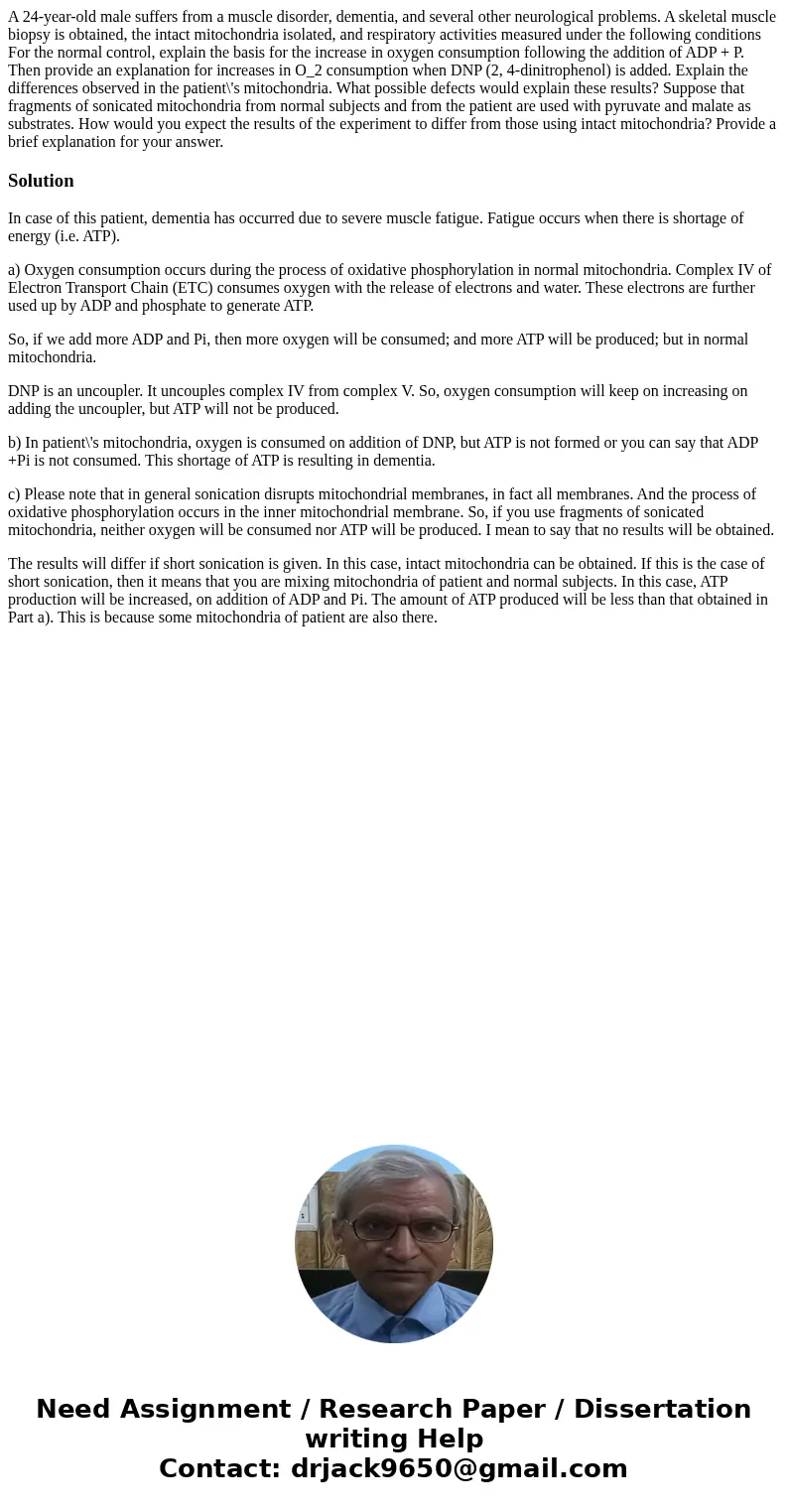A 24yearold male suffers from a muscle disorder dementia and
Solution
In case of this patient, dementia has occurred due to severe muscle fatigue. Fatigue occurs when there is shortage of energy (i.e. ATP).
a) Oxygen consumption occurs during the process of oxidative phosphorylation in normal mitochondria. Complex IV of Electron Transport Chain (ETC) consumes oxygen with the release of electrons and water. These electrons are further used up by ADP and phosphate to generate ATP.
So, if we add more ADP and Pi, then more oxygen will be consumed; and more ATP will be produced; but in normal mitochondria.
DNP is an uncoupler. It uncouples complex IV from complex V. So, oxygen consumption will keep on increasing on adding the uncoupler, but ATP will not be produced.
b) In patient\'s mitochondria, oxygen is consumed on addition of DNP, but ATP is not formed or you can say that ADP +Pi is not consumed. This shortage of ATP is resulting in dementia.
c) Please note that in general sonication disrupts mitochondrial membranes, in fact all membranes. And the process of oxidative phosphorylation occurs in the inner mitochondrial membrane. So, if you use fragments of sonicated mitochondria, neither oxygen will be consumed nor ATP will be produced. I mean to say that no results will be obtained.
The results will differ if short sonication is given. In this case, intact mitochondria can be obtained. If this is the case of short sonication, then it means that you are mixing mitochondria of patient and normal subjects. In this case, ATP production will be increased, on addition of ADP and Pi. The amount of ATP produced will be less than that obtained in Part a). This is because some mitochondria of patient are also there.

 Homework Sourse
Homework Sourse